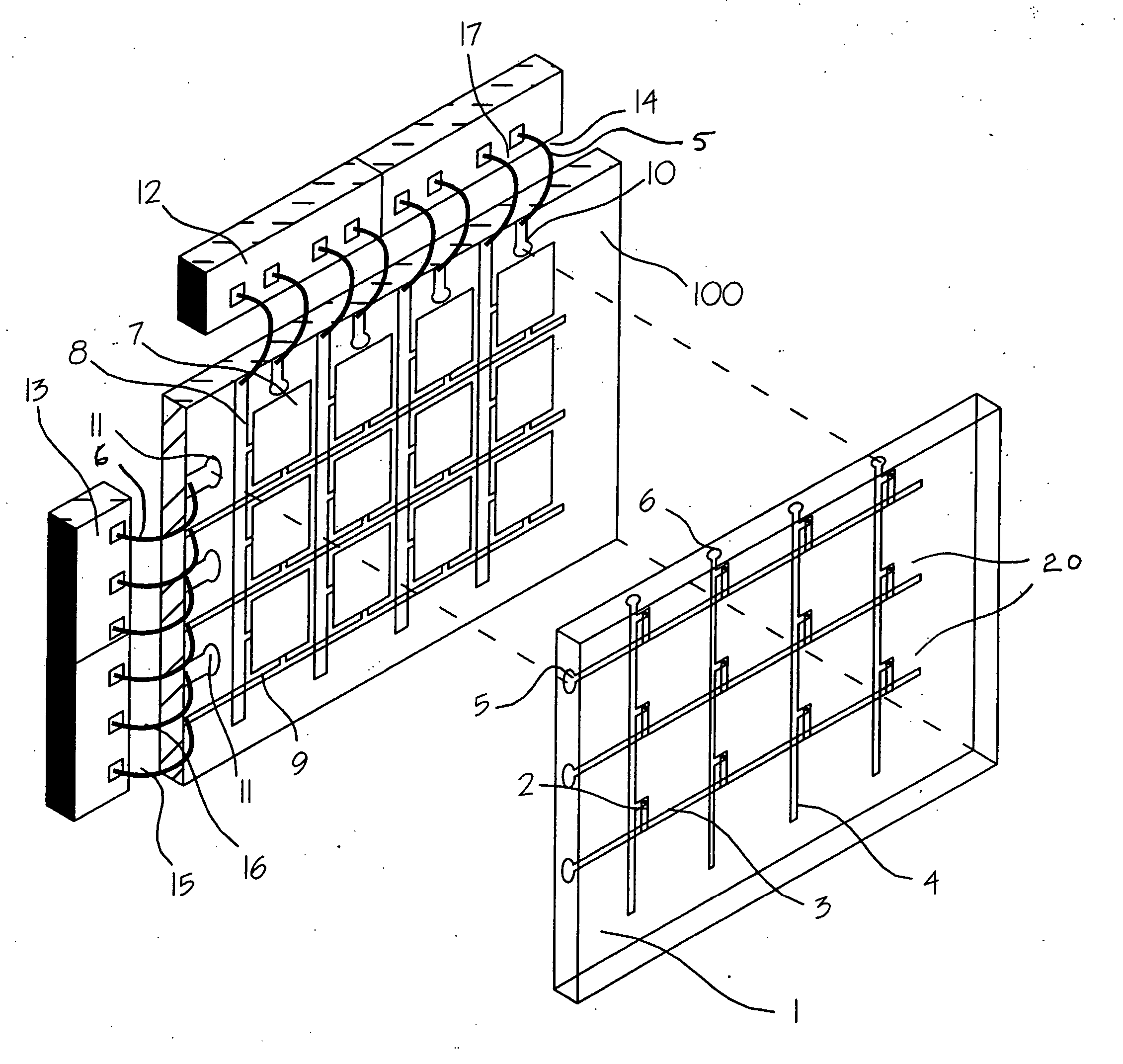Method and device for reading display pixel emission and ambient luminance levels
a technology of emissive display and ambient luminance, which is applied in the direction of static indicating devices, instruments, electric lighting sources, etc., can solve the problems of increasing assembly and maintenance costs, unwelcome additional costs, and increasing the cost of the devi
- Summary
- Abstract
- Description
- Claims
- Application Information
AI Technical Summary
Benefits of technology
Problems solved by technology
Method used
Image
Examples
second embodiment
[0046] In a second embodiment, the human finger can be used to shadow the sensor array from ambient light. This would be a relatively coarse input system, but accurate enough for activating icons on the display. Furthermore, the ambient light would need to be of sufficient intensity on the display that the shadow was detectable relative to unshadowed sensors.
third embodiment
[0047] In a third embodiment, the phenomenon of total internal reflection in plate is utilized. It is known that light entering the edge of a plate made from any transparent material in a wide range of optical densities (indices of refraction) will travel from one side of the plate to the other without light exiting the top and bottom faces of the plate provided the optical densities of the plate and the materials in contact with the plate are properly selected. Ordinary glass surrounded by transparent materials of higher optical density work well. Thus, a plate of glass or methylmethacrylate plastic can be attached to the front of the OLED display and sensor array. Red LEDs can direct light into one side of the plate without any LED light impinging on the sensors array because absent some disturbance the light will propagate entirely within the plate. If, however, on object is touched to the plate, the change in optical interface between the two materials will be sufficient to caus...
fourth embodiment
[0048] In a fourth embodiment, an image may be input rather than merely a location on the screen. For example, the image of a finger print can be input to the optical sensor array and captured by placing the image on the surface of the display glass (such as by using ink or by picking up the moisture or oils from the finger) and shadowing light through that image from any source of external light. It will be appreciated that the resolution increases if collimated light is used as the external source. In an alternative to this direct input, a system may be implemented in which a thin material such as cellophane can be attached to the front of the display with a dispensing roll on one side and a take-up spool on the other side. Between the cellophane and display glass is provided an optical medium such as glycerin which matches the optical density of the scattering plate. The cellophane rides on or within a glycerin layer that contacts both the scattering plate and the cellophane. Thi...
PUM
 Login to View More
Login to View More Abstract
Description
Claims
Application Information
 Login to View More
Login to View More - R&D
- Intellectual Property
- Life Sciences
- Materials
- Tech Scout
- Unparalleled Data Quality
- Higher Quality Content
- 60% Fewer Hallucinations
Browse by: Latest US Patents, China's latest patents, Technical Efficacy Thesaurus, Application Domain, Technology Topic, Popular Technical Reports.
© 2025 PatSnap. All rights reserved.Legal|Privacy policy|Modern Slavery Act Transparency Statement|Sitemap|About US| Contact US: help@patsnap.com



